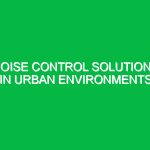Introduction to Personal Hearing Protection Devices
In today’s fast-paced and often noisy environments, protecting our hearing is paramount. Personal hearing protection devices (PHPDs) serve as essential tools within the Health, Safety, and Environment (HSE) framework. These devices, which include earplugs, earmuffs, and noise-canceling headphones, are designed to mitigate the effects of hazardous noise exposure, thereby preserving auditory health. The relevance of PHPDs cannot be overstated; they play a crucial role in preventing noise-induced hearing loss (NIHL), a condition that affects millions globally.
The World Health Organization (WHO) reports that approximately 1.1 billion young people are at risk of hearing loss due to unsafe listening practices and exposure to high noise levels. By understanding the correct use of PHPDs, individuals and organizations can significantly reduce the risk associated with excessive noise exposure. This article delves into the various types of PHPDs, potential hazards, best practices, and regulations guiding their use.
Understanding the Hazards and Risks Associated with PHPDs
When it comes to hearing protection, understanding the hazards is the first step toward effective safety management. Noise exposure can lead to a range of issues, from temporary hearing loss to permanent damage. Common environments where PHPDs are necessary include construction sites, manufacturing plants, and airports. Each of these settings presents distinct risks that warrant thorough examination.
Types of Noise Hazards
Noise can be classified into two categories: continuous and impulsive. Continuous noise is steady and persistent, such as the hum of machinery. Impulsive noise, on the other hand, consists of sharp, short bursts, like gunfire or explosions. Both types can be detrimental to hearing health and require appropriate PHPDs to safeguard against their effects.
Potential Risks
The risks associated with inadequate hearing protection are profound. Exposure to noise levels exceeding 85 decibels (dB) can lead to NIHL over time. For context, a typical conversation measures around 60 dB, while a chainsaw can reach levels of 110 dB. Prolonged exposure to such intense noise can damage the hair cells in the inner ear, which are responsible for transmitting sound signals to the brain.
Moreover, inadequate use of PHPDs can exacerbate these risks. For instance, a poorly fitted earplug may not provide sufficient attenuation, allowing harmful noise levels to penetrate. This highlights the importance of not only using PHPDs but also ensuring they are used correctly.
Best Practices for the Correct Use of Personal Hearing Protection Devices
To maximize the effectiveness of PHPDs, individuals must adhere to best practices for their selection, fitting, and maintenance. Here are some actionable steps to follow:
Selection of PHPDs
The first step in using PHPDs correctly is selecting the right type of device for the specific noise environment. Earplugs may be suitable for lower noise levels or when discretion is needed, while earmuffs are often preferred in louder settings due to their higher attenuation capabilities. Understanding the noise reduction rating (NRR) is crucial; it indicates how much noise the device can effectively block. Depending on the environment, the NRR should be matched to the noise exposure level for optimal protection.
Proper Fitting Techniques
Fitting PHPDs correctly is as vital as selecting the right type. For earplugs, it’s essential to roll them between your fingers to compress them before inserting them into the ear canal. After insertion, hold the earplug in place for a few seconds until it expands fully. Earmuffs should create a snug fit around the ears, with the cushion forming a complete seal. Regularly checking the fit and adjusting as necessary can prevent gaps that allow noise to enter.
Maintenance and Hygiene
Maintenance of PHPDs is often overlooked but is critical to their effectiveness. Disposable earplugs should be replaced after each use, while reusable ones should be cleaned regularly with mild soap and water. Earmuffs should be inspected for wear and tear, and the cushions should be replaced when they no longer provide a proper seal. Proper hygiene prevents ear infections and ensures the longevity of the devices.
Training and Awareness
Training employees on the importance of hearing protection and the correct use of PHPDs is a fundamental aspect of any HSE program. Workshops and informational sessions can help raise awareness about the risks of noise exposure and the benefits of proper hearing protection. Consider this: a construction manager once shared that after implementing regular training sessions, instances of ear-related complaints reduced by over 30%. This underscores the impact of education in fostering a culture of safety.
Regulations and Standards Governing PHPDs
Understanding the regulatory landscape surrounding PHPDs is essential for compliance and safety management. Various organizations set standards that dictate the use and effectiveness of hearing protection devices.
Occupational Safety and Health Administration (OSHA)
In the United States, OSHA outlines the requirements for hearing conservation programs in workplaces where noise levels exceed 85 dB. These regulations mandate the use of hearing protection devices, regular monitoring of noise levels, and training for employees on the risks and use of PHPDs. Compliance not only ensures the safety of workers but also protects employers from potential legal repercussions.
American National Standards Institute (ANSI)
The ANSI provides standards for the testing and classification of hearing protection devices. Their guidelines help manufacturers design devices that meet specific attenuation requirements, ensuring that users receive adequate protection in various noise environments. Employers should familiarize themselves with these standards to ensure that the PHPDs they provide are compliant and effective.
Conclusion: The Importance of Personal Hearing Protection Devices
In an era where noise pollution is increasingly prevalent, understanding the significance of personal hearing protection devices and their correct use is vital for both individual and organizational health. The potential hazards associated with noise exposure are serious, yet they can be effectively mitigated through the proper selection, fitting, and maintenance of PHPDs. Regulations and standards not only guide compliance but also foster a culture of safety within the workplace.
As we continue to engage in environments laden with auditory risks, let us remember the importance of safeguarding our hearing. After all, the sounds of life—laughter, music, conversation—are too precious to lose. Let’s take proactive steps to protect our hearing today for a healthier tomorrow.


